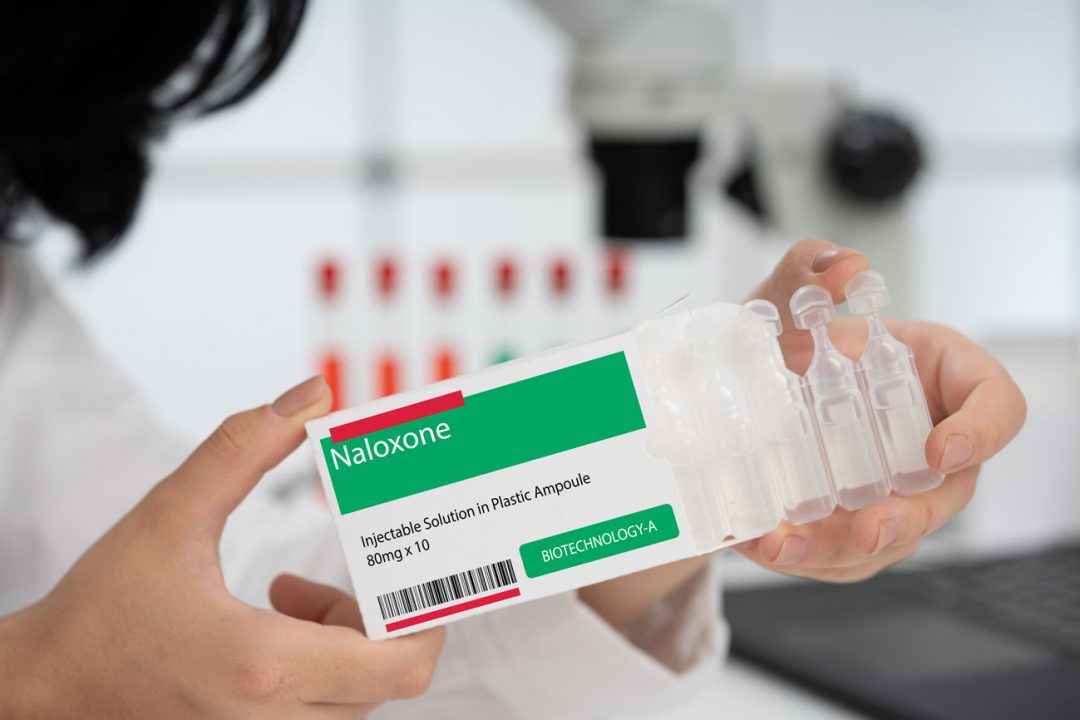Advertisment
University of Cincinnati research shows widespread naloxone distribution not enough to impact overdose death rate

The highest ever number of opioid-related overdose deaths in the United States was recorded in 2020 at 68,630, a 68% increase in just two years. Naloxone is a medicine that can rapidly reverse an opioid overdose, but a new study out of the University of Cincinnati finds that widespread community distribution of naloxone through a take-home naloxone (THN) program did not significantly impact the median monthly opioid overdose rates.
The study was published in PLOS ONE.
The Naloxone Distribution Collaborative (NDC) was facilitated from October 2017 through December 2019 by Hamilton County Public Health (HCPH). Opioid overdose mortality was compared between the period before (Oct. 2015-Sep. 2017) and during (Oct. 2017-Sep. 2019) the program. Prior to the start of the program, there was little distribution of THN to individuals in Hamilton County.
“Our goal with the naloxone distribution collaborative was to see what happens if we could saturate an entire community and see what impact that might have on the opioid overdose rates,” says Caroline Freiermuth, MD, Endowed Chair to Benefit the Acute Treatment of Mental Health and Substance Use Disorder in the Department of Emergency Medicine at the UC College of Medicine. “We looked to see what impact broad distribution of naloxone had on the community and what we found that it held opioid overdose death rates steady.”
HCPH managed naloxone inventory, recruited distribution sites and distributed cartons directly through community events and health department service locations such as a syringe service program or local jail. Partnering sites were chosen based on their interactions with persons at risk for opioid overdose, people who may interact with those at risk for opioid overdose, community involvement and willingness to participate. To be included in the study, naloxone cartons had to have documentation of either distribution to an individual from a site in Hamilton County, or distribution to an individual with a reported residence within Hamilton County.
Freiermuth says after seeing the study results showing no significant change in the opioid overdose death rate, they went back and modeled what would have happened had that level of naloxone supply been available to the community to predict the opioid death rate to be.
“If you do that prediction modeling, we would have thought the opioid death rate would keep climbing,” she says. “We saw that throughout the country and throughout Ohio, whereas here in Hamilton County we pretty much held steady. Granted there were many other things going on in our county that probably contributed to that, but we like to think that at least a piece of that was naloxone was more broadly available.”
The THN effort in Hamilton County ended at the conclusion of 2019, and Freiermuth says the availability of naloxone has been evolving since then. Project DAWN (Deaths Avoided with Naloxone) is a network of opioid overdose education and naloxone distribution programs through the Ohio Department of Health that attempts to get naloxone out in the community as widely as possible by distributing it to community agencies who then distribute it to individuals. Plus, she says, naloxone is being made available over the counter, so that is another way people who want to have it on hand can obtain it.
The NDC was a successful effort to increase access to Narcan in the community, according to Darci Smith, director of harm reduction for HCPH.
“Increasing the amount of Narcan available in the community increases opportunities to save lives and helps reduce the stigma associated with substance use disorder and carrying Narcan,” she says. “The NDC helped lay the foundation for our current naloxone education and distribution efforts.”
With the backdrop of September being National Recovery Month, Freiermuth says one of the biggest hopes with the study is that it continues to help combat the stigma.
“There is still a lot of stigma around opioid use disorder and people who use drugs,” she says. “If you talk to people who use drugs, they don’t want to carry naloxone because there’s a stigma associated with that. It’s interesting because people will recognize that they are at risk for overdose yet still not always carry the medication because of that external symbol. We hope for people to ask for this medication, for people to be more aware that they may need to use it and that it’s not just homeless people or those with mental health disease who are using drugs.”





